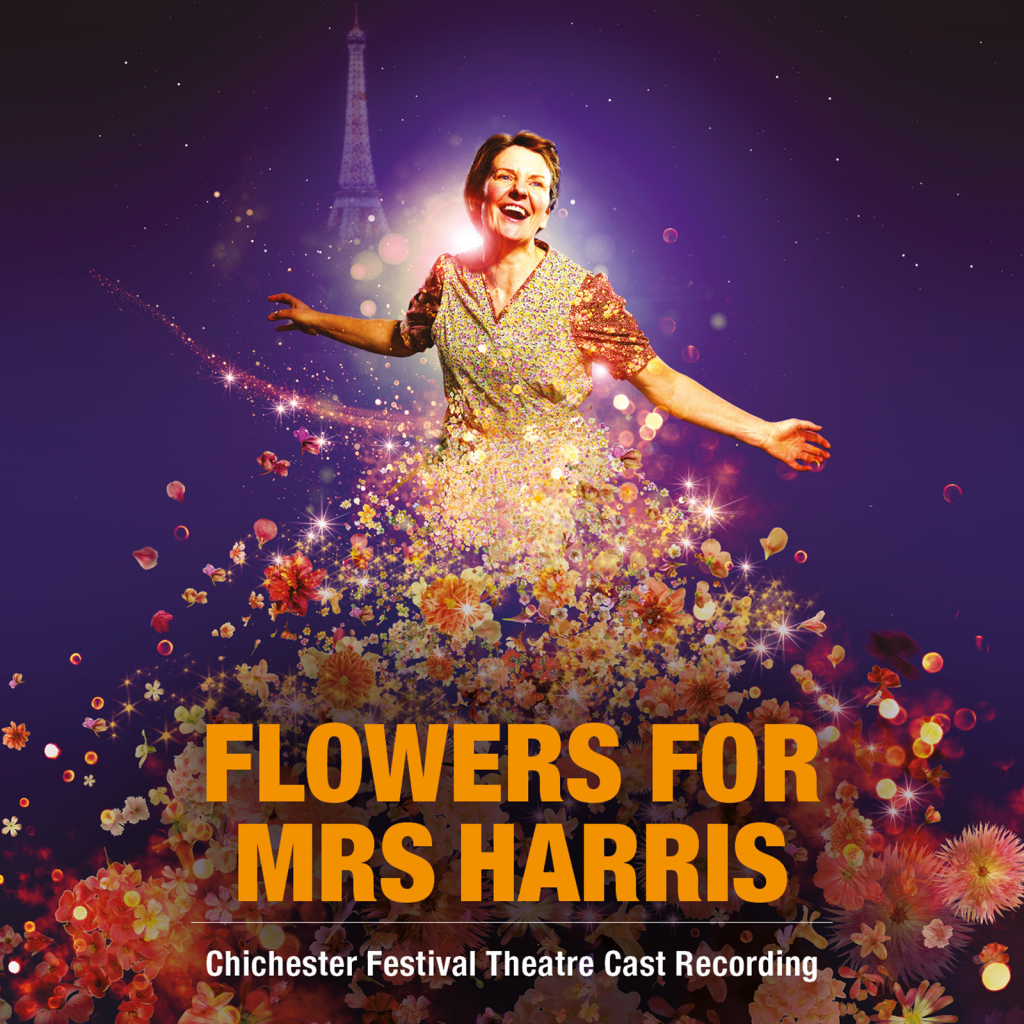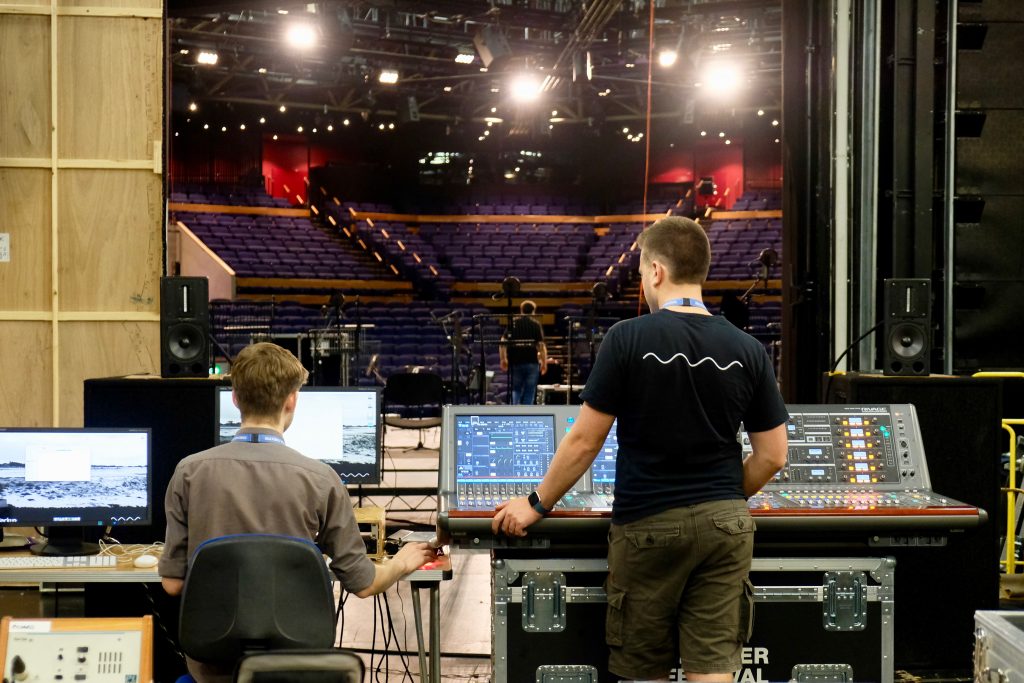A Phone Call
In May, Richard Taylor called: “Tom [Brady, MD] and I have been discussing making an album of Mrs Harris. What do you reckon?”
M: “What, now? In the middle of a pandemic?”
R: “Why not? All the musicians and company from the 2018 production are available! It would be great to release it in the autumn.”
M: “That would mean recording by the end of July. Studios are only just reopening, and to socially-distance we’d need a huge studio for this size company.”
R: “But studios want to record each section individually, which really won’t work for this score.”
M: “So let’s do it in a theatre, preferably one without a fly tower.”
R: “Let’s see if we can do it in Chichester.”
Well, it went something like that, although over several weeks, and questioning whether it was or wasn’t actually possible, or affordable.
Chichester Festival Theatre agreed to us using their theatre. It would be a great try-out for them getting artists back in their theatre in the new world. And wonderful to record where it performed in 2018.
Preparation
Discussions over the style of recording centred on Richard’s desire to keep it sounding live: “The last thing I want is a a taxidermy of a recording.”
Dates were confirmed with the company and musicians, and accommodation organised. Diagrams and drawings were prepared to ensure performers were far enough apart. And adjusted, as guidance from the government was changed. And risk assessed. And re-assessed.
A socially-distanced rekkie took place early in July to discuss logistics, which, very oddly, seemed to fall into place rather than the opposite.
Sound equipment, having done nothing for most of 2020, was de-cobwebbed and tested. This took significantly longer than it should have done, due to staff on furlough, whilst trying to mentally and physically get back up to speed.
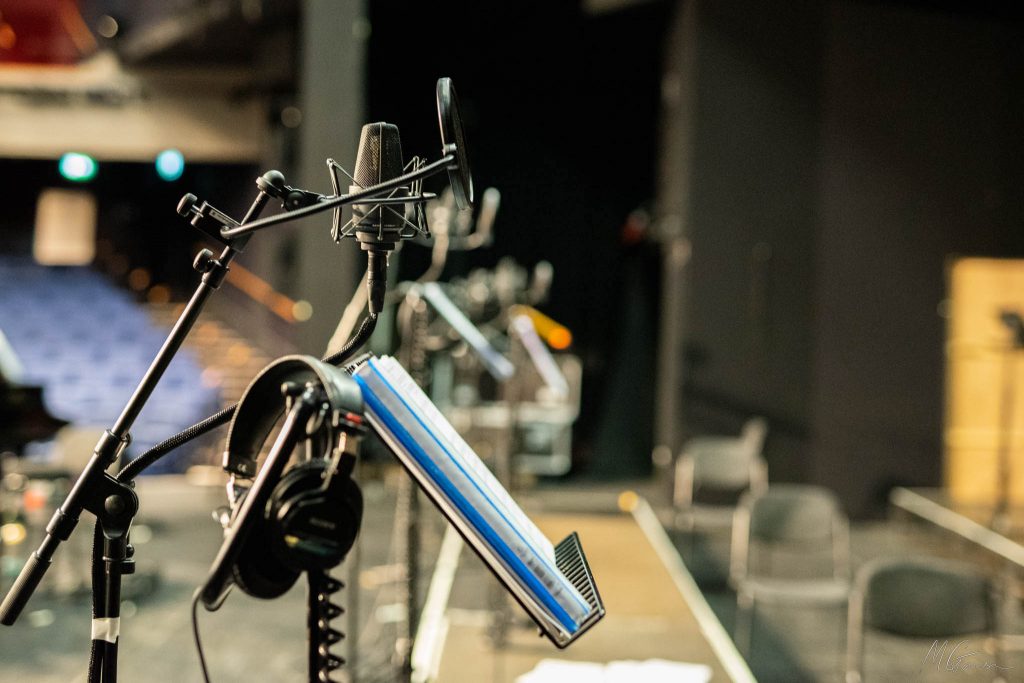
© Maxim Gamble
Installation
Then, for three days we converted the Covid-secure Chichester Festival Theatre into a recording studio.
The stage become the live room, the rear dock became the control room, and the foyer (and Oaklands Park, as the weather was glorious) provided a green room.
Bizarrely the idea of using a theatre was helpful in the current climate as there is far more ancillary space – and air – than in most recording studios.
A chalked mark-out demonstrated that the drawings were pretty accurate. There was just enough space for everyone under the (then) government guidance. One major benefit with having at least two metres around everyone (three for the greater aerosol-generating instruments) allowed plenty of room for masked sound engineers to run cables and place microphones.
Just to stretch risk assessment skills to the limits, we chose to use radio mics on the performers as well as stand mics. Fortunately we were only worrying about sound quality, not how beautiful the mic placement was, so elastic was the order of the day and the performers fitted themselves.
Recording
A two hour rehearsal with singers and orchestra allowed Tom to remind everyone of the trickier passages before we started recording.
Everyone had been practicing hard. Although as no one had performed in an ensemble for several months, it was harder than expected.
We ended the first session three minutes ahead of where Tom had had planned us to be. This (inevitably) was soon lost at the start of the second day, but we still managed to complete recording with enough minutes to spare for Max to take a company photo.
It was interesting that many musicians found that the additional distance between players made it easier to be able to hear each other, rather than needing to use headphones.
Most of the cast, who were at lest 9m from the conductor, found headphones were necessary to get the information they needed.
We mic’d the singers with headworn Sennheiser MKE 1 capsules on SK 9000 radio transmitters (in HD mode, of course,) as well as Neumann TLM 103 mics on stands. This provided options at the mixing stage, to try and keep the ‘live’ feel.
Only a few moments were tracked: James Turner [percussion] played about 8 bars of drum kit, which for both acoustic and space reasons we added on separately; a bass drum roll; and a triangle ‘ting’ that he couldn’t reach. Odd, isn’t it, when the expanded layout for recording (because you can) means that the pad is harder to play?
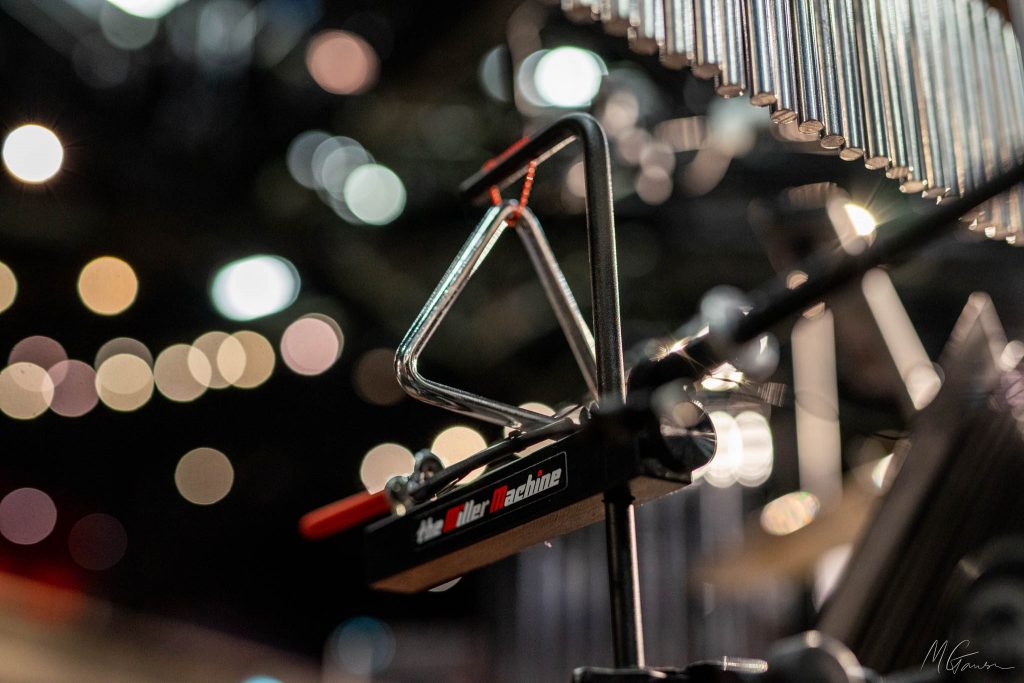
© Maxim Gamble
Stamina, a resource collectively we hadn’t had to call upon of late, became a struggle, particularly in the load-out, and returning the studio back to a theatre.
Technical
Recorded on 29 & 30 July 2020 on stage at Chichester Festival Theatre using a Yamaha Rivage PM10 console with an RPio 622 stage rack; microphones from Sennheiser, Neumann and DPA; monitor speakers and amplifiers from Opus Audio; connected using ZRM cable technology from Studio Connections.
Postscript
In these testing times, like Mrs Harris’s trip to Paris, this recording was a triumph of kindness, patience and determination, as we all gathered together in one space to sing, play and record Richard Taylor’s fantastic music.
_____________________________________________________________________
Flowers For Mrs Harris is available to purchase from the 3rd of December from Dress Circle Records or to download from iTunes
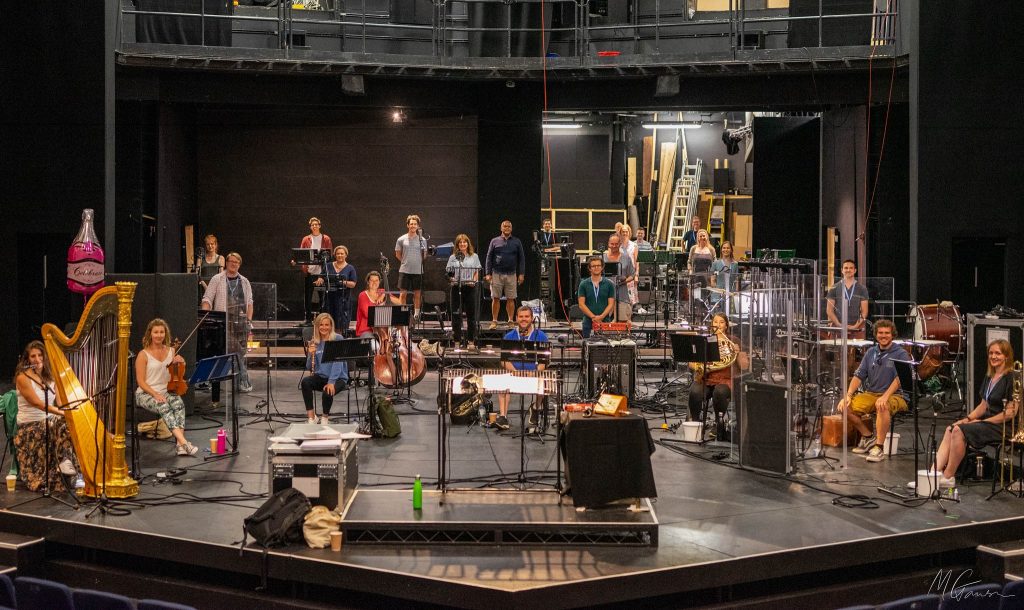
© Maxim Gamble
Produced by Richard Taylor and Mike Walker
Engineered by Mike Walker
Conducted by Tom Brady
Orchestrations by Richard Taylor
Assistant Recording Engineers: Charlie Smith, Maxim Gamble and Mike Keniger
Mixed at Loh Humm Studios
Assistant Mix Engineer: Chris Simpson
Producer for SimG Records Simon Greiff


